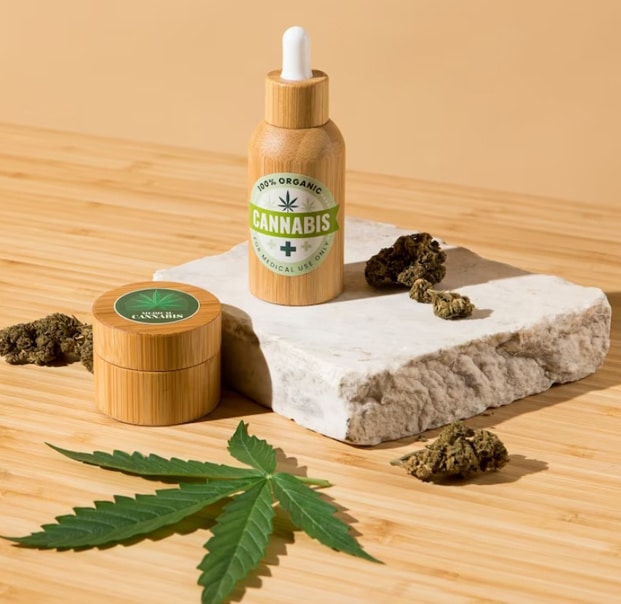How to Reduce Your Cannabis Business Risk Level
Running a cannabis business involves navigating both traditional and industry-specific risks that can threaten profitability and longevity. Understanding these risks and implementing strategies to mitigate them is essential for success. This guide offers insights into the factors impacting your risk level and provides actionable steps to help you manage exposures effectively.

Running a business comes with risk. It doesn’t matter how big your company is, your profit levels, how many people you employ, or what industry you’re in — there are risks. But some industries carry more risk than others, like cannabis.
Cannabis business risk is a combination of traditional business risks and industry-specific risks. While the level of risk may seem overwhelming, you’re not in this alone. Here’s how you can reduce your cannabis business risk.
4 Reasons to Reduce Your Cannabis Business Risk
Risk is inevitable in doing business, but reducing your risk takes work. For a business owner already swamped with tasks, reducing your risk can feel like just one more to do on an already long list. Here’s why it’s worth your time.
- Profitability: Losses from exposures carve away at your profits. The more risks that come to fruition, the more your hard-earned profit is at stake. Covering your vulnerabilities saves you money in the long run.
- Business longevity: Some risks can set a business back a few thousand dollars, while others can effectively wipe you out. A well-prepared business is a business with a solid foundation to weather change and turbulence. Understanding and managing risks effectively keep your business alive and well for years by helping you navigate the storms.
- Reputation: Some risks have a bigger loss than money – like your reputation. A cyber breach can damage your business’s reputation and impact customer engagement. A 2019 Customer Survey found that it only takes one data breach for up to 81% of consumers to stop engaging with your business.
- Peace of mind: Risks and exposures can keep any CEO up at night. A plan to reduce your risk helps you sleep soundly, knowing that even if the worst happens, you’re covered. You can’t put a price on peace of mind.
How to Think Like a Cannabis Underwriter to Reduce Risk
No one thinks about business risks more than an underwriter. By adopting the mindset of an underwriter, you can take a deep dive into your business to understand the likelihood and impact of each exposure.
An underwriter has to assess the potential risk incurred for every insurance policy they write. They do this by using objective and subjective information, industry best practices, and any rules set in place by the insurer.
Objective information is typically sourced from documents and can include computer risk models, experience ratings, and past insurance policies and claims, all information you have at your disposal. Subjective data is more opinion-based if a company has been with an insurance agency for years without a claim or an applicant comes highly recommended.
An underwriter will examine the insurance policies you seek and their associated risk factors. Suppose you’re looking for a property policy on a manufacturing warehouse. In that case, the underwriter may look at the neighborhood and crime rates, the points of exposure in the building, and the repair history. If you’re seeking a theft policy for a dispensary, they’ll look at your product storage policies, safe room, and cash-handling policies. They may also examine your security system, neighborhood, and crime rates.
Underwriters have a set of rules that they work by, which reflect their risk tolerance, the likelihood of risk, and their client’s goals. These are the rules underwriters must follow whether they’re writing new policies or renewing old ones. There may be risk assessment formulas involved or computer modeling. The more you understand the facts that impact your risk, the more you can think like an underwriter.
7 Factors to Know That Impact Your Risk Level
Dozens of factors impact your risk level, some increasing and some decreasing. An incomplete list of risk factors includes:
- Industry. Some industries, like cannabis, have a higher risk factor because of the history of the plant, the street value of the products, and the fact that many cannabis businesses operate with a cash-only model.
- Business history. How many years have you been in business? Is this your first business? Have you operated a similar business in the industry or have complementary experience in another industry?
- Claims history. Have you filed claims for this or another business before? The underwriter will check the frequency and size of the claims and your loss history.
- Insurance history. If you had insurance with another firm, the underwriter would investigate who held the policy and if your insurance was declined, canceled, or lapsed.
- Financial history. If you have large loans or have suffered bankruptcy, foreclosure, or repossession, this increases your risk level of being insured.
- Location. If you have a physical location, where is it? The neighborhood you’re in greatly impacts your building safety and the risk of theft or damage.
- Revenue. In a cash-only industry like cannabis, the amount of money you handle daily impacts your theft risk. How much revenue is your company bringing in, what are your expenses, and what are your profit levels?
- Safety. Whether your business has a safety program, OSHA, fire, or safety code violations greatly impact your risk, especially general liability and workers’ compensation.
Savvy Ways to Reduce Your Risk Exposure
Follow best practices. Your risk levels are reduced when you follow best practices. From property protection to cybersecurity and OSHA regulations, there are best practices that can reduce your risk level for every risk you face. You’re not the only company to face these risks, so take advantage of the communal knowledge.
Get your team on board with industry standards. It’s not enough for a CEO or an owner to care about risk — your team has to care too. That means they need to know the standards and feel empowered to take action. Clear communication from the top down is essential here, as is modeling best practice behavior. Your team will only care as much as you do.
Don’t ignore your risk; learn to manage it. There are five steps to risk management, and they’re fairly straightforward:
- Identification: Name the risks your business faces.
- Analysis: Calculate the damage each risk would cause to your business.
- Evaluation: Create a plan to deal with your risks based on likelihood and potential damage.
- Tracking: Follow your exposures over time.
- Treatment: Take action — purchase cannabis insurance policies.
Know the cannabis-specific risks you must navigate to be profitable. In addition to standard business risks like general liability and cyber threats, cannabis companies face industry-specific risks like product liability, theft, and financing. Just as cannabis companies must navigate and comply with regulations at all levels, you must also navigate industry-specific risks.
Get the right insurance coverage. Cannabis is a unique beast of an industry, and you need to work with an insurer who understands the nuances and the specific risks you’re facing. It pays to work with a cannabis insurance company that can help you build a custom insurance plan with the right limits.
Find a commercial insurance broker you can partner with, not only buy insurance from or signs the paperwork. Navigating and managing your risk is significantly easier with the right team in your corner. An insurance broker can be a valuable part of a risk management plan, so seek the right relationship, not just the right price.
Protecting your cannabis company can seem confusing; however, we’re a full-service insurance brokerage working with carriers worldwide to offer you the best coverage possible. We’re here to help! Please reach out to us today by emailing [email protected] or calling 646-854-1093 for a customized letter of commitment or learning more about your cannabis insurance options.



